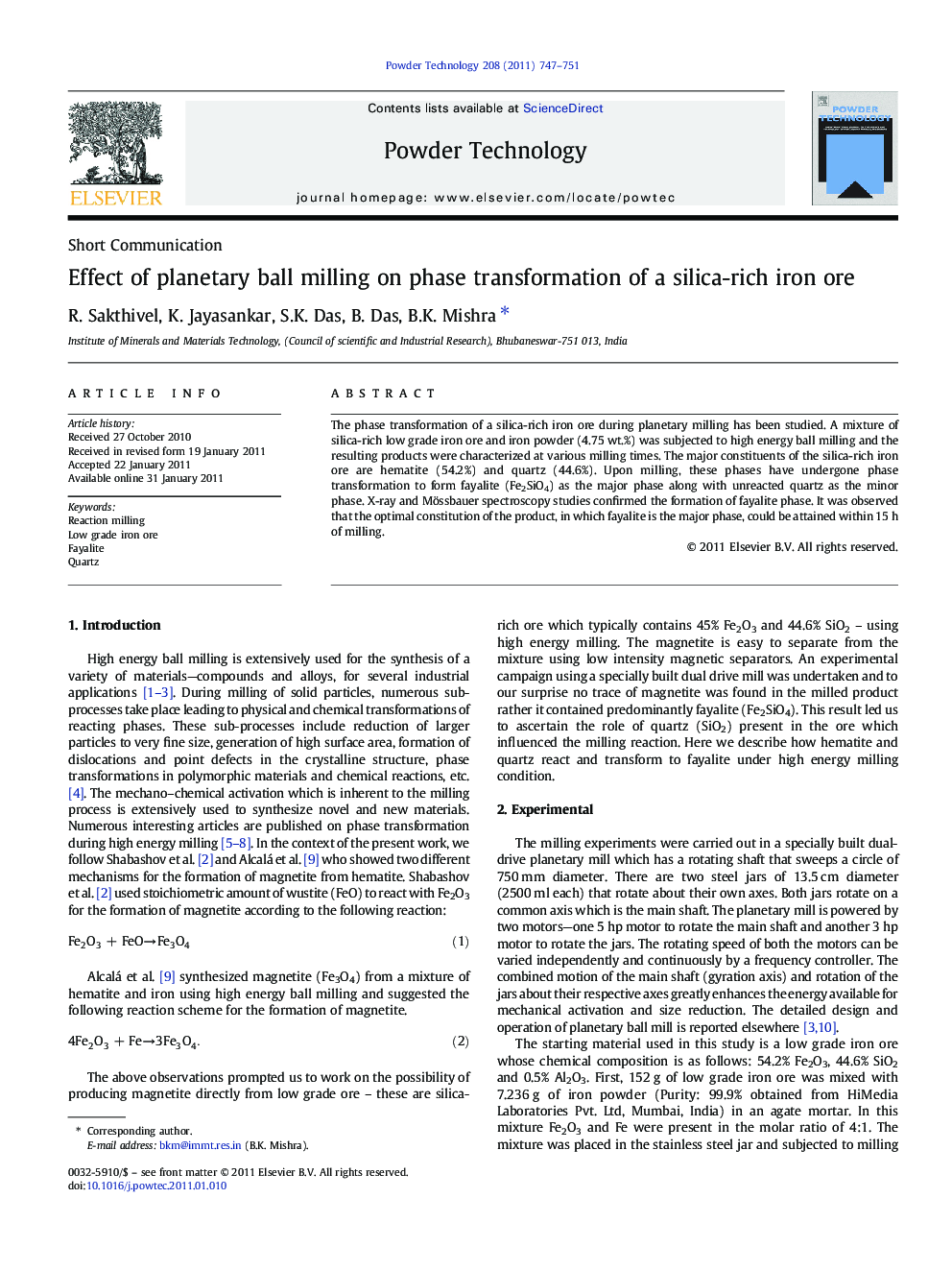| Article ID | Journal | Published Year | Pages | File Type |
|---|---|---|---|---|
| 237611 | Powder Technology | 2011 | 5 Pages |
The phase transformation of a silica-rich iron ore during planetary milling has been studied. A mixture of silica-rich low grade iron ore and iron powder (4.75 wt.%) was subjected to high energy ball milling and the resulting products were characterized at various milling times. The major constituents of the silica-rich iron ore are hematite (54.2%) and quartz (44.6%). Upon milling, these phases have undergone phase transformation to form fayalite (Fe2SiO4) as the major phase along with unreacted quartz as the minor phase. X-ray and Mössbauer spectroscopy studies confirmed the formation of fayalite phase. It was observed that the optimal constitution of the product, in which fayalite is the major phase, could be attained within 15 h of milling.
Graphical AbstractThis paper demonstrates how a silica-rich iron ore undergoes phase transformation to iron(III)-rich fayalite under high energy milling conditions. The products formed at various milling times have been characterized. XRD and Mössbauer spectroscopy studies confirm for formation of iron(III)-rich fayalite at optimum milling time of 15 h. Chemical reactions involved for formation of fayalite phase during milling process is explained.Figure optionsDownload full-size imageDownload as PowerPoint slideResearch Highlights► Planetary ball milling induces phase transformation of silica-rich iron ore. ► Silica-rich iron ore is converted to fayalite in the presence of iron powder during milling. ► Formed fayalite is quite comparable to natural fayalite. ► Milling overcomes the natural conditions required for the formation of fayalite.
